Intel Pentium G630 vs Intel Core i5-2400
|
|
|
|
|
Intel Pentium G630 vs Intel Core i5-2400
Comparison of the technical characteristics between the processors, with the Intel Pentium G630 on one side and the Intel Core i5-2400 on the other side. The first is dedicated to the desktop sector, It has 2 cores, 2 threads, a maximum frequency of 2,7GHz. The second is used on the desktop segment, it has a total of 4 cores, 4 threads, its turbo frequency is set to 3,4 GHz. The following table also compares the lithography, the number of transistors (if indicated), the amount of cache memory, the maximum RAM memory capacity, the type of memory accepted, the release date, the maximum number of PCIe lanes, the values obtained in Geekbench 4 and Cinebench R15.
Note: Commissions may be earned from the links above.
This page contains references to products from one or more of our advertisers. We may receive compensation when you click on links to those products. For an explanation of our advertising policy, please visit this page.
Specifications:
| Processor | Intel Pentium G630 | Intel Core i5-2400 | ||||||
| Market (main) | Desktop | Desktop | ||||||
| ISA | x86-64 (64 bit) | x86-64 (64 bit) | ||||||
| Microarchitecture | Sandy Bridge | Sandy Bridge | ||||||
| Family | Pentium 600 | Core i5-2000 | ||||||
| Part number(s), S-Spec | BX80623G630, BXC80623G630, CM806230104645, CM8062301046404, Q1G0, SR05S |
BX80623I52400, BXC80623I52400, CM8062300834106, CM8062300834107, Q1ED, Q1HT, SR00Q |
||||||
| Release date | Q3 2013 | Q1 2011 | ||||||
| Lithography | 32 nm | 32 nm | ||||||
| Transistors | 504. 000.000 000.000 |
1.160.000.000 | ||||||
| Cores | 2 | 4 | ||||||
| Threads | 2 | 4 | ||||||
| Base frequency | 2,7 GHz | 3,1 GHz | ||||||
| Turbo frequency | — | 3,4 GHz | ||||||
| Bus speed | 5 GT/s | 5 GT/s | ||||||
| Cache memory | 3 MB | 6 MB | ||||||
| Max memory capacity | 32 GB | 32 GB | ||||||
| Memory types | DDR3 1066 | DDR3 1066/1333 | ||||||
| Max # of memory channels | 2 | 2 | ||||||
| Max memory bandwidth | 17 GB/s | 21 GB/s | ||||||
| Max PCIe lanes | 16 | 16 | ||||||
| TDP | 65 W | 95 W | ||||||
| Suggested PSU | 600W ATX Power Supply | 600W ATX Power Supply | ||||||
| GPU integrated graphics | Intel HD Graphics (Sandy Bridge) | Intel HD Graphics 2000 | ||||||
| GPU execution units | 6 | 6 | ||||||
| GPU shading units | 48 | 48 | ||||||
| GPU base clock | 850 MHz | 850 MHz | ||||||
| GPU boost clock | 1100 MHz | 1100 MHz | ||||||
| GPU FP32 floating point | 76,8 GFLOPS | 110,4 GFLOPS | ||||||
| Socket | LGA1155 | LGA1155 | ||||||
| Compatible motherboard | Socket LGA 1155 Motherboard | Socket LGA 1155 Motherboard | ||||||
| Maximum temperature | 69. 1°C 1°C |
72.6°C | ||||||
| Security | Execute Disable Bit | — | ||||||
| CPU-Z single thread | 258 | 308 | ||||||
| CPU-Z multi thread | 522 | 1.212 | ||||||
| Cinebench R15 single thread | 51 | 119 | ||||||
| Cinebench R15 multi-thread | 175 | 421 | ||||||
| PassMark single thread | 1.234 | 1.567 | ||||||
| PassMark CPU Mark | 1.283 | 3.811 | ||||||
| (Windows 64-bit) Geekbench 4 single core |
2. 291 291 |
3.247 | ||||||
| (Windows 64-bit) Geekbench 4 multi-core |
3.789 | 9.282 | ||||||
| (SGEMM) GFLOPS performance |
31,8 GFLOPS | 139,74 GFLOPS | ||||||
| (Multi-core / watt performance) Performance / watt ratio |
58 pts / W | 98 pts / W | ||||||
| Amazon | ||||||||
| eBay |
Note: Commissions may be earned from the links above.
We can better compare what are the technical differences between the two processors.
Suggested PSU: We assume that we have An ATX computer case, a high end graphics card, 16GB RAM, a 512GB SSD, a 1TB HDD hard drive, a Blu-Ray drive. We will have to rely on a more powerful power supply if we want to have several graphics cards, several monitors, more memory, etc.
We will have to rely on a more powerful power supply if we want to have several graphics cards, several monitors, more memory, etc.
Price: For technical reasons, we cannot currently display a price less than 24 hours, or a real-time price. This is why we prefer for the moment not to show a price. You should refer to the respective online stores for the latest price, as well as availability.
The processor Intel Core i5-2400 has a larger number of cores, the turbo frequency of Intel Core i5-2400 is bigger, that the PDT of Intel Pentium G630 is lower. The Intel Pentium G630 was designed earlier.
Performances :
Performance comparison between the two processors, for this we consider the results generated on benchmark software such as Geekbench 4.
| CPU-Z — Multi-thread & single thread score | |
|---|---|
| Intel Core i5-2400 |
308 1.  212 212 |
| Intel Pentium G630 |
258 522 |
In single core, the difference is 19%. In multi-core, the difference in terms of gap is 132%.
Note: Commissions may be earned from the links above. These scores are only an
average of the performances got with these processors, you may get different results.
CPU-Z is a system information software that provides the name of the processor, its model number, the codename, the cache levels, the package, the process. It can also gives data about the mainboard, the memory. It makes real time measurement, with finally a benchmark for the single thread, as well as for the multi thread.
| Cinebench R15 — Multi-thread & single thread score | |
|---|---|
| Intel Core i5-2400 |
119 421 |
| Intel Pentium G630 |
51 175 |
In single core, the difference is 133%.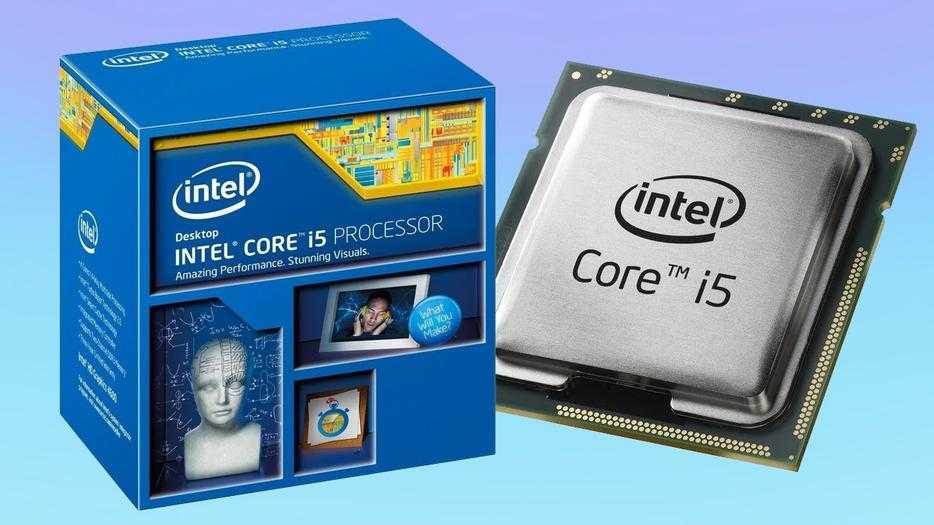 In multi-core, the difference in terms of gap is 141%.
In multi-core, the difference in terms of gap is 141%.
Note: Commissions may be earned from the links above. These scores are only an
average of the performances got with these processors, you may get different results.
Cinebench R15 evaluates the performance of CPU calculations by restoring a photorealistic 3D scene. The scene has 2,000 objects, 300,000 polygons, uses sharp and fuzzy reflections, bright areas, shadows, procedural shaders, antialiasing, and so on. The faster the rendering of the scene is created, the more powerful the PC is, with a high number of points.
| PassMark — CPU Mark & single thread | |
|---|---|
| Intel Core i5-2400 |
1.567 3.811 |
| Intel Pentium G630 |
1.234 1.283 |
In single core, the difference is 27%. In multi-core, the difference in terms of gap is 197%.
In multi-core, the difference in terms of gap is 197%.
Note: Commissions may be earned from the links above. These scores are only an
average of the performances got with these processors, you may get different results.
PassMark is a benchmarking software that performs several performance tests including prime numbers, integers, floating point, compression, physics, extended instructions, encoding, sorting. The higher the score is, the higher is the device capacity.
On Windows 64-bit:
| Geekbench 4 — Multi-core & single core score — Windows 64-bit | |
|---|---|
| Intel Core i5-2400 |
3.247 9.282 |
| Intel Pentium G630 |
2.291 3.789 |
In single core, the difference is 42%. In multi-core, the difference in terms of gap is 145%.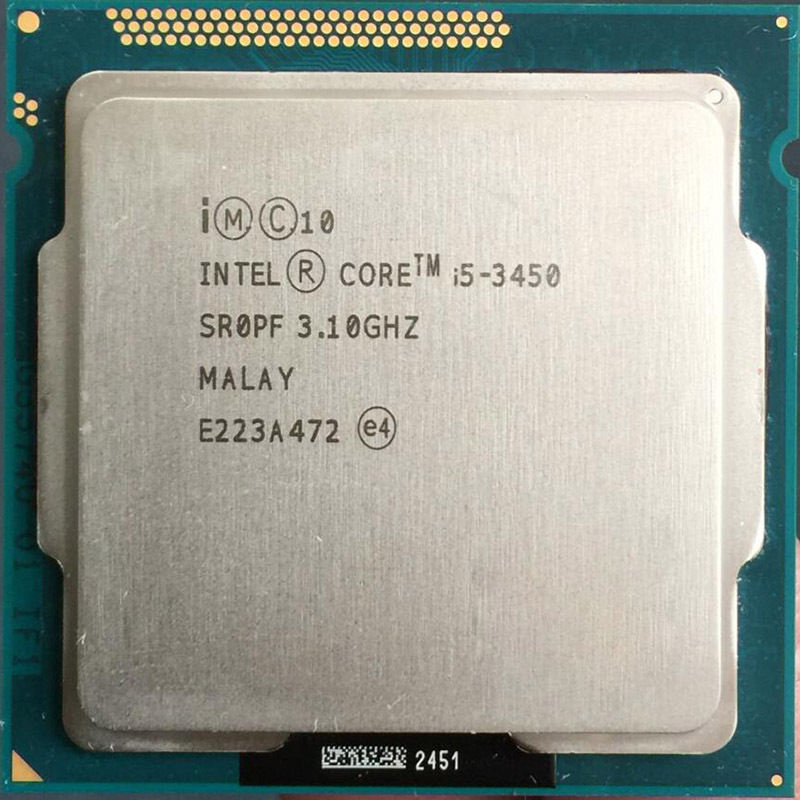
On Linux 64-bit:
| Geekbench 4 — Multi-core & single core score — Linux 64-bit | |
|---|---|
| Intel Core i5-2400 |
3.425 9.109 |
| Intel Pentium G630 |
2.441 3.523 |
In single core, the difference is 40%. In multi-core, the difference in terms of gap is 159%.
On Mac OS X 64-bit:
| Geekbench 4 — Multi-core & single core score — Mac OS X 64-bit | |
|---|---|
| Intel Core i5-2400 |
3.040 8.635 |
| Intel Pentium G630 |
2.269 3.879 |
In single core, the difference is 34%. In multi-core, the difference in terms of gap is 123%.
Note: Commissions may be earned from the links above. These scores are only an
These scores are only an
average of the performances got with these processors, you may get different results.
Geekbench 4 is a complete benchmark platform with several types of tests, including data compression, images, AES encryption, SQL encoding, HTML, PDF file rendering, matrix computation, Fast Fourier Transform, 3D object simulation, photo editing, memory testing. This allows us to better visualize the respective power of these devices. For each result, we took an average of 250 values on the famous benchmark software.
Equivalence:
Intel Pentium G630 AMD equivalentIntel Core i5-2400 AMD equivalent
See also:
Intel Core i5-2400S
Intel Pentium G630 vs Intel Core i5-3470S
Summary
-
Intel Pentium G630
100%
-
Intel Core i5-3470S
215%
Relative performance
-
Intel Pentium G630
100%
-
Intel Core i5-3470S
155%
Relative performance
-
Intel Pentium G630
100%
-
Intel Core i5-3470S
276%
Relative performance
Reasons to consider Intel Pentium G630 |
| None |
Reasons to consider Intel Core i5-3470S |
Much higher single threaded performance (around 55% higher), makes a noticeable performance difference in gaming and the majority of applications.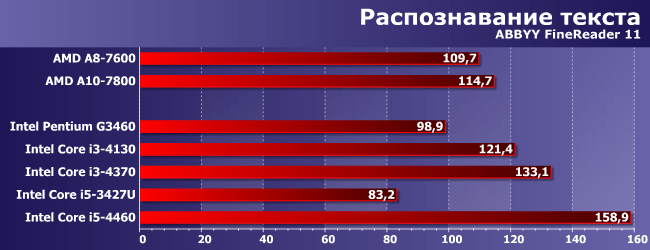 |
| Much higher multi threaded performance (around 176% higher). This allows for higher performance in professional applications like encoding or heavy multitasking. |
| Around 115% higher average synthetic performance. |
Gaming
HWBench recommends Intel Core i5-3470S
Based on game and synthetic benchmarks, and theoretical specifications.
Productivity
HWBench recommends Intel Core i5-3470S
Based on productivity benchmarks, overall multithreaded performance and theoretical specifications.
Features
| Intel Pentium G630 | Intel Core i5-3470S | |||
|---|---|---|---|---|
| MMX | ||||
| SSE | ||||
| SSE2 | ||||
| SSE3 | ||||
| SSSE3 | ||||
| SSE4.2 | ||||
| AVX | ||||
| EIST | ||||
| Intel 64 | ||||
| XD bit | ||||
| VT-x | ||||
| AES-NI | ||||
| VT-d | ||||
| TXT | ||||
Architecture
| Intel Pentium G630 | Intel Core i5-3470S | |||
|---|---|---|---|---|
| Architecture | Intel_SandyBridge | vs | Intel_IvyBridge | |
| Market | Desktop | vs | Desktop | |
| Memory Support | DDR3 | vs | DDR3 | |
| Codename | Sandy Bridge | vs | Ivy Bridge | |
| Release Date | Sep 2011 | vs | Jun 2012 |
Cores
| Intel Pentium G630 | Intel Core i5-3470S | |||
|---|---|---|---|---|
| Cores | 2 | vs | 4 | |
| Threads | 2 | vs | 4 | |
| SMPs | 1 | vs | 1 | |
| Integrated Graphics | Intel HD (Sandy Bridge) | vs | Intel HD 2500 |
Cache
| Intel Pentium G630 | Intel Core i5-3470S | |||
|---|---|---|---|---|
| L1 Cache | 64 KB (per core) | vs | 64 KB (per core) | |
| L2 Cache | 256 KB (per core) | vs | 256 KB (per core) | |
| L3 Cache | 3072 KB (shared) | vs | 6144 KB (shared) |
Physical
| Intel Pentium G630 | Intel Core i5-3470S | |||
|---|---|---|---|---|
| Socket | Intel Socket 1155 | vs | Intel Socket 1155 | |
| Max Case Temp | unknown | vs | 69°C | |
| Package | FC-LGA10 | vs | FC-LGA12C | |
| Die Size | 131mm² | vs | 133mm² | |
| Process | 32 nm | vs | 22 nm |
Performance
| Intel Pentium G630 | Intel Core i5-3470S | |||
|---|---|---|---|---|
| Cpu Frequency | 2700 MHz | vs | 2900 MHz | |
| Turbo Clock | none | vs | 3600 MHz | |
| Base Clock | 100 MHz | vs | 100 MHz | |
| Voltage | unknown | vs | unknown | |
| TDP | 65 W | vs | 65 W |
-
Intel Pentium G630
2700 points
-
Intel Core i5-3470S
3708 points
Points — higher is better
-
Intel Pentium G630
5400 points
-
Intel Core i5-3470S
11948 points
Points — higher is better
-
Intel Pentium G630
3072
-
Intel Core i5-3470S
8858
points — higher is better
-
Intel Pentium G630
2078
-
Intel Core i5-3470S
3145
points — higher is better
-
Intel Pentium G630
3664
-
Intel Core i5-3470S
9677
points — higher is better
-
Intel Pentium G630
1799
-
Intel Core i5-3470S
2874
points — higher is better
Pentium G630 vs Core i5-6500
Availability
Intel Pentium Dual-Core Processor G630 2. 7 Ghz 3 MB Cache LGA 1155 — BX80623G630
7 Ghz 3 MB Cache LGA 1155 — BX80623G630
Buy on Amazon
$60
In Stock
Updated 79 minutes ago
Availability
No items available
Key Differences
In short — Core i5-6500 outperforms Pentium G630 on the selected game parameters. We do not have the prices of both CPUs to compare value. The better performing Core i5-6500 is 1397 days newer than Pentium G630.
Advantages of Intel Pentium G630
Advantages of Intel Core i5-6500
VALORANT
Resolution
1920×1080
Game Graphics
High
Pentium G630
Desktop • Sep 4th, 2011
FPS
337
83%
Value, $/FPS
$0.18/FPS
100%
Price, $
$60
100%
Value Winner
Intel Pentium Dual-Core Processor G630 2.7 Ghz 3 MB Cache LGA 1155 — BX80623G630
Buy for $60 on Amazon
In Stock
Updated 79 minutes ago
Core i5-6500
Desktop • Jul 2nd, 2015
FPS
405
100%
Value, $/FPS
Price, $
FPS Winner
Resolution
1920×1080
Game Graphics
High
Pentium G630
Desktop • Sep 4th, 2011
Core i5-6500
Desktop • Jul 2nd, 2015
475
FPS
570
FPS
Counter-Strike: Global Offensive
787
FPS
935
FPS
League of Legends
337
FPS
405
FPS
VALORANT
192
FPS
232
FPS
Grand Theft Auto V
1057
FPS
1250
FPS
Minecraft
Geekbench 5 Benchmarks
Pentium G630
Desktop • Sep 4th, 2011
Single-Core
470
53%
Multi-Core
854
29%
Core i5-6500
Desktop • Jul 2nd, 2015
Single-Core
895
100%
Multi-Core
2898
100%
|
Intel Pentium G630 |
vs |
Intel Core i5-6500 |
|---|---|---|
| Sep 4th, 2011 | Release Date |
Jul 2nd, 2015 |
| Pentium | Collection | Core i5 |
| Sandy Bridge | Codename | Skylake |
| Intel Socket 1155 | Socket | Intel Socket 1151 |
|
Desktop |
Segment |
Desktop |
| 2 | Cores |
4 |
| 2 | Threads |
4 |
2. 7 GHz 7 GHz |
Base Clock Speed |
3.2 GHz |
| Non-Turbo | Turbo Clock Speed | 3.6 GHz |
| 65 W | TDP | 65 W |
| 32 nm | Process Size |
14 nm |
| 27.0x | Multiplier |
32.0x |
|
Intel HD (Sandy Bridge) |
Integrated Graphics | None |
| No | Overclockable | No |
Builds Using Pentium G630 or Core i5-6500
VALORANT, 1080p, High
HP Z240 Tower Computer PC
76 FPS
$5.25/FPS
Radeon RX 550
Core i5-6500
32 GB, 256 GB SSD + 2 TB HDD
Buy on Amazon
$398.99
In Stock
Updated 70 minutes ago
HP 800 G3 Small Form Computer PC
64 FPS
$5.47/FPS
GeForce GT 1030
Core i5-6500
16 GB, 256 GB SSD + 500 GB HDD
Buy on Amazon
$350
In Stock
Updated 71 minutes ago
HP Z240 Tower Computer PC
76 FPS
$4. 59/FPS
59/FPS
Radeon RX 550
Core i5-6500
16 GB, 256 GB SSD
Buy on Amazon
$348.5
In Stock
Updated 71 minutes ago
HP Z240 Tower Computer PC
76 FPS
$4.92/FPS
Radeon RX 550
Core i5-6500
16 GB, 128 GB SSD + 500 GB HDD
Buy on Amazon
$374.29
In Stock
Updated 71 minutes ago
Dell OptiPlex 7040 Small Form Computer PC
76 FPS
$4.99/FPS
Radeon RX 550
Core i5-6500
16 GB, 128 GB SSD + 500 GB HDD
Buy on Amazon
$379.27
In Stock
Updated 71 minutes ago
Dell Gaming T3620 High Performance Tower Desktop PC
64 FPS
$8.91/FPS
GeForce GT 1030
Core i5-6500
16 GB, 2 TB HDD
Buy on Amazon
$569.99
In Stock
Updated 263319 minutes ago
Select from the most popular similar processor comparisons. Most compared processor combinations, including the currently selected ones, are at the top.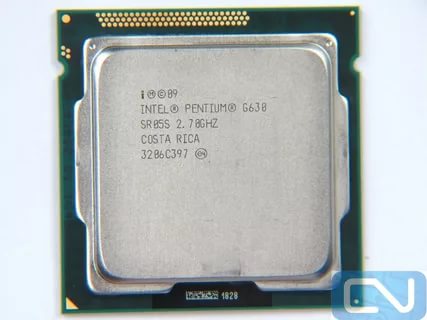
Core i5-6500
N/A Stock
Core i3-7100
Core i5-6500
N/A Stock
Xeon E5-2637 v4
N/A Stock
Ryzen 7 5800X
Pentium G630
Ryzen 5 5600X
$191.34
Core i5-6500
N/A Stock
Ryzen 5 3600X
Pentium G630
Ryzen 5 3600
$137.99
Pentium G630
Ryzen 9 5900X
$398.99
Pentium G630
Ryzen 5 5600G
$151.99
Pentium G630
Core i9-9900K
Pentium G630
Comparison of Intel Core i5-3470 and Intel Pentium G630
Comparative analysis of Intel Core i5-3470 and Intel Pentium G630 processors by all known characteristics in the categories: General Information, Performance, Memory, Graphics, Graphical Interfaces, Compatibility, Peripherals, Security and Reliability, Technology, Virtualization.
Analysis of processor performance by benchmarks: PassMark — Single thread mark, PassMark — CPU mark, Geekbench 4 — Single Core, Geekbench 4 — Multi-Core, 3DMark Fire Strike — Physics Score, CompuBench 1. 5 Desktop — Face Detection (mPixels/s), CompuBench 1.5 Desktop — Ocean Surface Simulation (Frames/s), CompuBench 1.5 Desktop — T-Rex (Frames/s), CompuBench 1.5 Desktop — Video Composition (Frames/s), CompuBench 1.5 Desktop — Bitcoin Mining (mHash/s), GFXBench 4.0 — T-Rex (Frames), GFXBench 4.0 — T-Rex (Fps).
5 Desktop — Face Detection (mPixels/s), CompuBench 1.5 Desktop — Ocean Surface Simulation (Frames/s), CompuBench 1.5 Desktop — T-Rex (Frames/s), CompuBench 1.5 Desktop — Video Composition (Frames/s), CompuBench 1.5 Desktop — Bitcoin Mining (mHash/s), GFXBench 4.0 — T-Rex (Frames), GFXBench 4.0 — T-Rex (Fps).
Intel Core i5-3470
versus
Intel Pentium G630
Benefits
Reasons to choose Intel Core i5-3470
- Newer processor, release date difference 7 month(s)
- More applications to run at the same time: 2 cores vs. 2
- 2 more threads: 4 vs 2
- Approximately 33% more clock speed: 3.60 GHz vs 2.7 GHz
- A newer manufacturing process of the processor allows it to be more powerful, but with lower power consumption: 22 nm vs 32 nm
- L1 cache is 2x(s) larger, which means more data can be stored in it for quick access
- L2 cache is 2x(s) larger, which means more data can be stored in it for quick access
- L3 cache 2 times more means more data can be stored in it for quick access
- Performance in PassMark — Single thread mark benchmark is about 58% higher: 1942 vs 1226
- Performance in PassMark — CPU mark benchmark is 3.
 7 times(s) more: 4668 vs 1274
7 times(s) more: 4668 vs 1274 - About 57% better performance in Geekbench 4 — Single Core: 734 vs 469
- 2.8x better performance in Geekbench 4 — Multi-Core: 2396 vs 843
- Performance in CompuBench 1.5 Desktop — Desktop 3.2 times greater Face Detection (mPixels/s): 3.217 vs 1.017
- CompuBench 1.5 Desktop — Video Composition (Frames/s) 2.6 times larger: 1.821 vs 0.698
- 2.9x better performance in CompuBench 1.5 Desktop — Bitcoin Mining (mHash/s): 5.424 vs 1.872
| Release date | 8 April 2012 vs September 2011 |
| Number of cores | 4 vs 2 |
| Number of threads | 4 vs 2 |
| Maximum frequency | 3.60 GHz vs 2.7 GHz |
| Process | 22 nm vs 32 nm |
| Level 1 cache | 64 KB (per core) vs 64 KB (per core) |
| Level 2 cache | 1024 KB vs 256 KB (per core) |
| Level 3 cache | 6144 KB vs 3072 KB (shared) |
| PassMark — Single thread mark | 1942 vs 1226 |
| PassMark — CPU mark | 4668 vs 1274 |
| Geekbench 4 — Single Core | 734 vs 469 |
| Geekbench 4 — Multi-Core | 2396 vs 843 |
CompuBench 1. 5 Desktop — Face Detection (mPixels/s) 5 Desktop — Face Detection (mPixels/s) |
3.217 vs 1.017 |
| CompuBench 1.5 Desktop — T-Rex (Frames/s) | 0.393 vs 0.136 |
| CompuBench 1.5 Desktop — Video Composition (Frames/s) | 1.821 vs 0.698 |
| CompuBench 1.5 Desktop — Bitcoin Mining (mHash/s) | 5.424 vs 1.872 |
Reasons to choose Intel Pentium G630
- About 3% more maximum core temperature: 69.1°C vs 67.4°C
- About 18% less power consumption: 65 Watt vs 77 Watt
- DesktopBench5 performance — Ocean Surface Simulation (Frames/s) 2.6 times bigger: 25.45 vs 9.637
| Maximum core temperature | 69. 1°C vs 67.4°C 1°C vs 67.4°C |
| Power consumption (TDP) | 65 Watt vs 77 Watt |
| CompuBench 1.5 Desktop — Ocean Surface Simulation (Frames/s) | 25.45 vs 9.637 |
Benchmark comparison
CPU 1: Intel Core i5-3470
CPU 2: Intel Pentium G630
| PassMark — Single thread mark |
|
|||
| PassMark — CPU mark |
|
|||
| Geekbench 4 — Single Core |
|
|||
| Geekbench 4 — Multi-Core |
|
|||
CompuBench 1. 5 Desktop — Face Detection (mPixels/s) 5 Desktop — Face Detection (mPixels/s) |
|
|||
| CompuBench 1.5 Desktop — Ocean Surface Simulation (Frames/s) |
|
|||
| CompuBench 1.5 Desktop — T-Rex (Frames/s) |
|
|||
CompuBench 1.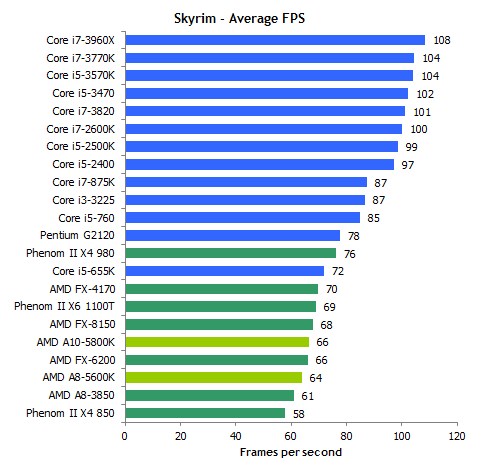 5 Desktop — Video Composition (Frames/s) 5 Desktop — Video Composition (Frames/s) |
|
|||
| CompuBench 1.5 Desktop — Bitcoin Mining (mHash/s) |
|
| Name | Intel Core i5-3470 | Intel Pentium G630 |
|---|---|---|
| PassMark — Single thread mark | 1942 | 1226 |
| PassMark — CPU mark | 4668 | 1274 |
| Geekbench 4 — Single Core | 734 | 469 |
| Geekbench 4 — Multi-Core | 2396 | 843 |
| 3DMark Fire Strike — Physics Score | 2692 | |
CompuBench 1.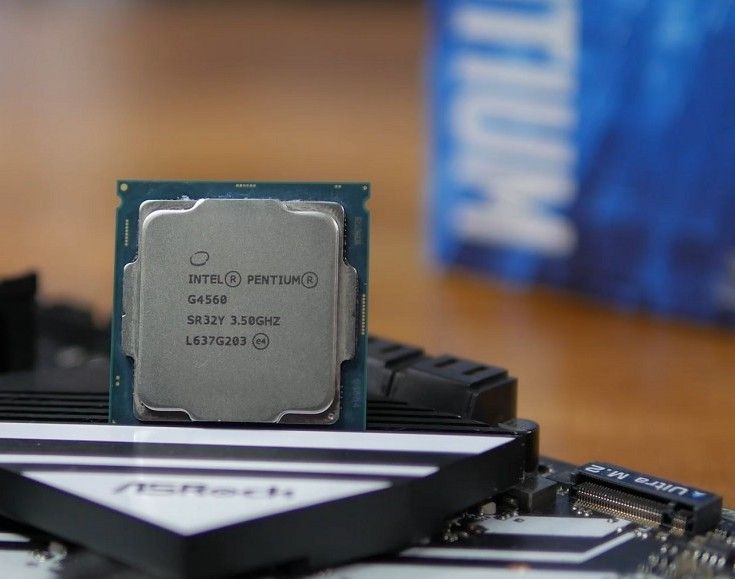 5 Desktop — Face Detection (mPixels/s) 5 Desktop — Face Detection (mPixels/s) |
3.217 | 1.017 |
| CompuBench 1.5 Desktop — Ocean Surface Simulation (Frames/s) | 9.637 | 25.45 |
| CompuBench 1.5 Desktop — T-Rex (Frames/s) | 0.393 | 0.136 |
| CompuBench 1.5 Desktop — Video Composition (Frames/s) | 1.821 | 0.698 |
| CompuBench 1.5 Desktop — Bitcoin Mining (mHash/s) | 5.424 | 1.872 |
| GFXBench 4.0 — T-Rex (Frames) | 1515 | |
GFXBench 4.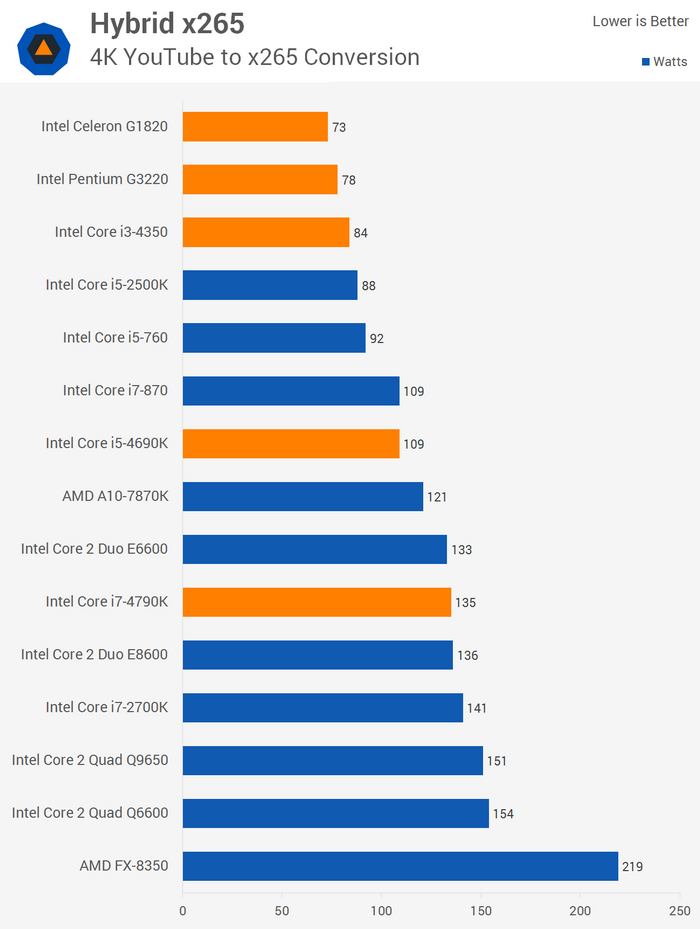 0 — T-Rex (Fps) 0 — T-Rex (Fps) |
1515 |
Performance comparison
| Intel Core i5-3470 | Intel Pentium G630 | |
|---|---|---|
| Architecture name | Ivy Bridge | Sandy Bridge |
| Production date | April 8, 2012 | September 2011 |
| Price at first issue date | $184 | $100 |
| Place in the ranking | 1779 | 2415 |
| Price now | $112.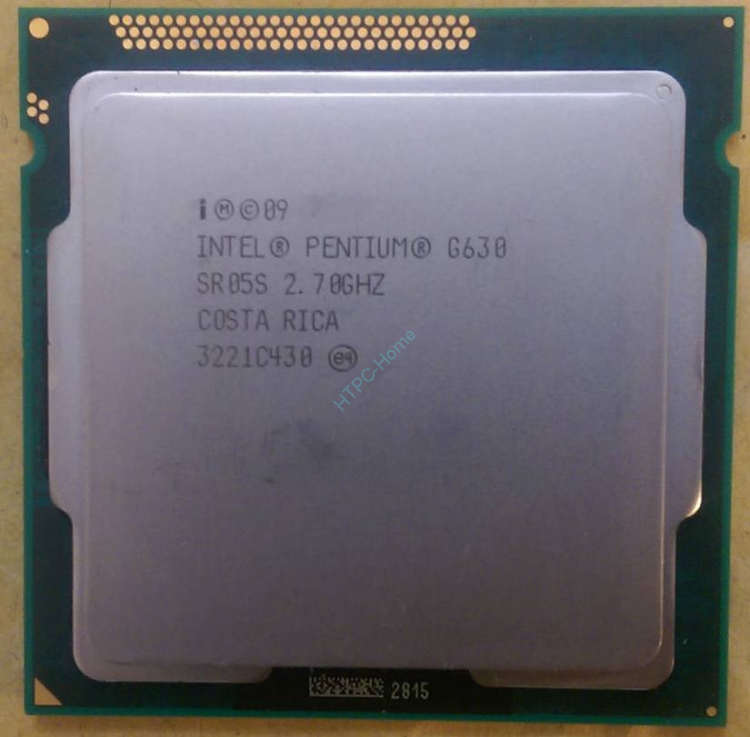 06 06 |
$24.99 |
| Processor Number | i5-3470 | G630 |
| Series | Legacy Intel® Core™ Processors | Legacy Intel® Pentium® Processor |
| Status | Discontinued | Discontinued |
| Price/performance ratio (0-100) | 17.60 | 27.96 |
| Applicability | Desktop | Desktop |
| Support 64 bit | ||
| Base frequency | 3. 20 GHz 20 GHz |
2.70 GHz |
| Bus Speed | 5 GT/s DMI | 5 GT/s DMI |
| Crystal area | 132.8mm | 131 mm |
| Level 1 cache | 64 KB (per core) | 64 KB (per core) |
| Level 2 cache | 1024KB | 256 KB (per core) |
| Level 3 cache | 6144KB | 3072 KB (shared) |
| Process | 22 nm | 32 nm |
| Maximum case temperature (TCase) | 67 °C | |
| Maximum core temperature | 67.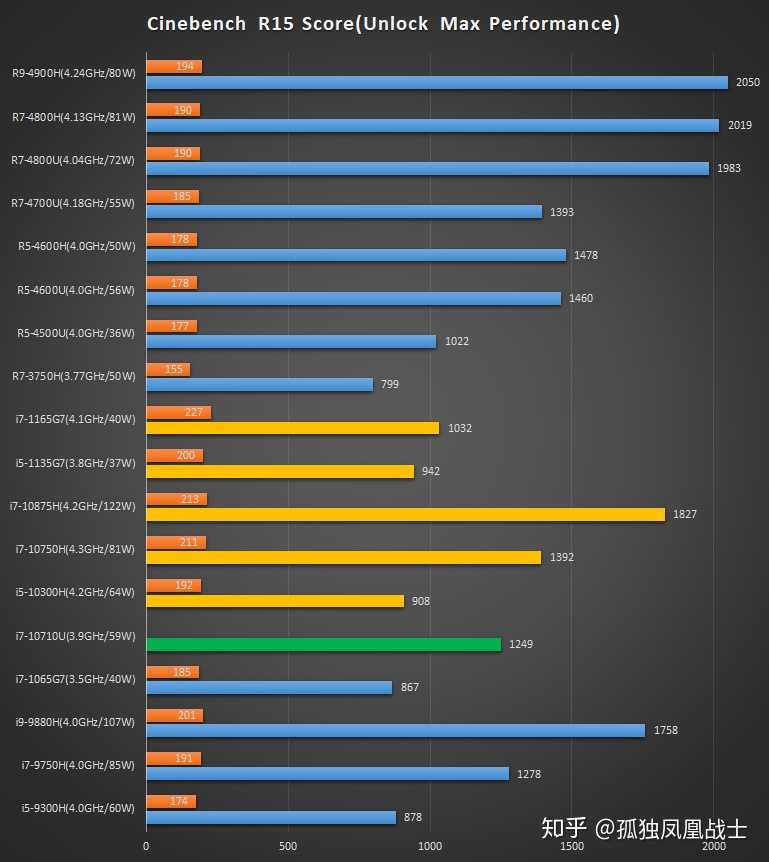 4°C 4°C |
69.1°C |
| Maximum frequency | 3.60 GHz | 2.7 GHz |
| Number of cores | 4 | 2 |
| Number of threads | 4 | 2 |
| Number of transistors | 504 million | |
| Maximum number of memory channels | 2 | 2 |
| Maximum memory bandwidth | 25.6 GB/s | 17 GB/s |
| Maximum memory size | 32GB | 32GB |
| Supported memory types | DDR3 1333/1600 | DDR3 1066 |
| Device ID | 0x152 | |
| Graphics base frequency | 650MHz | 850MHz |
| Graphics max dynamic frequency | 1. 10 GHz 10 GHz |
1.10 GHz |
| Maximum GPU clock | 1.1 GHz | 1.1 GHz |
| Intel® Clear Video HD Technology | ||
| Intel® Flexible Display Interface (Intel® FDI) | ||
| Intel® InTru™ 3D Technology | ||
| Intel® Quick Sync Video | ||
| Integrated graphics | Intel® HD Graphics 2500 | Intel HD Graphics |
| Maximum number of monitors supported | 3 | 2 |
| WiDi support | ||
| Low Halogen Options Available | ||
| Maximum number of processors in configuration | 1 | 1 |
| Package Size | 37.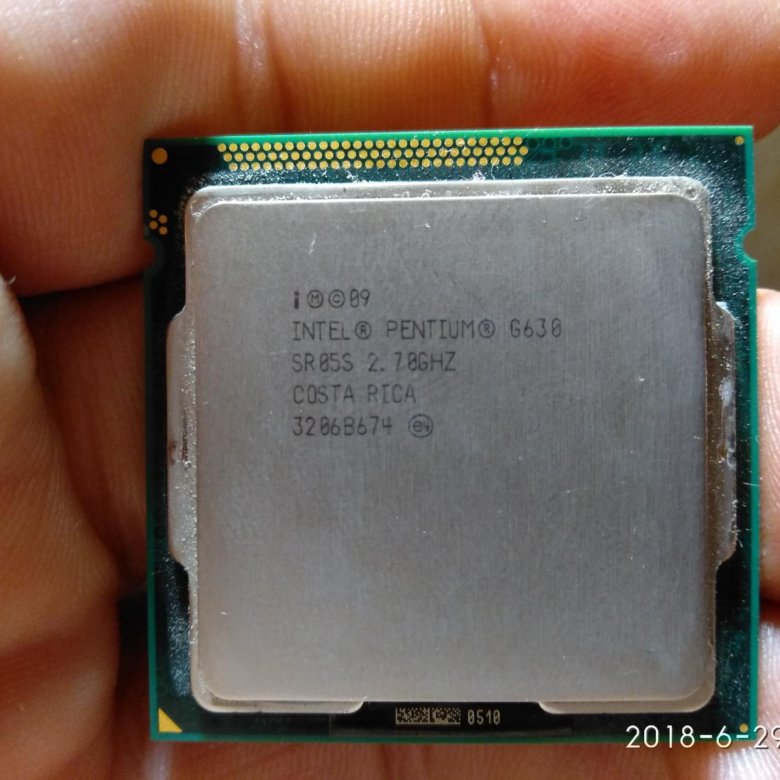 5mm x 37.5mm 5mm x 37.5mm |
37.5mm x 37.5mm |
| Supported sockets | FCLGA1155 | FCLGA1155 |
| Power consumption (TDP) | 77 Watt | 65 Watt |
| Thermal Solution | 2011D | |
| PCI Express revision | 3.0 | 2.0 |
| PCIe configurations | up to 1×16, 2×8, 1×8 & 2×4 | |
| Anti-Theft Technology | ||
| Execute Disable Bit (EDB) | ||
| Intel® Identity Protection Technology | ||
| Intel® Secure Key Technology | ||
| Intel® Trusted Execution Technology (TXT) | ||
| Enhanced Intel SpeedStep® Technology | ||
| Flexible Display interface (FDI) | ||
| Idle States | ||
| Extended instructions | Intel® SSE4.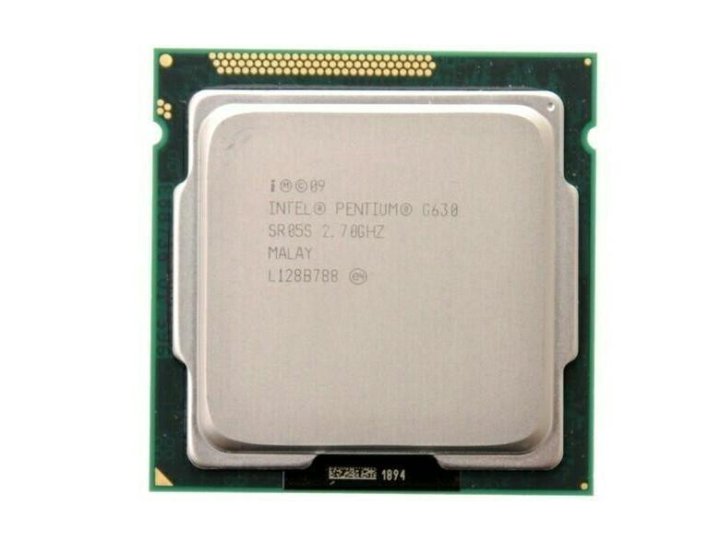 1, Intel® SSE4.2, Intel® AVX 1, Intel® SSE4.2, Intel® AVX |
Intel® SSE4.1, Intel® SSE4.2 |
| Intel 64 | ||
| Intel® Advanced Vector Extensions (AVX) | ||
| Intel® AES New Instructions | ||
| Intel® Hyper-Threading Technology | ||
| Intel® TSX-NI | ||
| Intel® Turbo Boost Technology | ||
| Intel® vPro™ Platform Eligibility | ||
| Thermal Monitoring | ||
| Intel® Fast Memory Access | ||
| Intel® Flex Memory Access | ||
| Intel® Optane™ Memory Supported | ||
| Intel® Virtualization Technology (VT-x) | ||
| Intel® Virtualization Technology for Directed I/O (VT-d) | ||
| Intel® VT-x with Extended Page Tables (EPT) |
Compare Intel Pentium G630 and Intel Core i5-2400S
Comparative analysis of Intel Pentium G630 and Intel Core i5-2400S processors by all known characteristics in the categories: General Information, Performance, Memory, Graphics, Graphical Interfaces, Compatibility, Peripherals, Security and Reliability, Technologies, Virtualization.
Analysis of processor performance by benchmarks: PassMark — Single thread mark, PassMark — CPU mark, Geekbench 4 — Single Core, Geekbench 4 — Multi-Core, CompuBench 1.5 Desktop — Face Detection (mPixels/s), CompuBench 1.5 Desktop — Ocean Surface Simulation ( Frames/s), CompuBench 1.5 Desktop — T-Rex (Frames/s), CompuBench 1.5 Desktop — Bitcoin Mining (mHash/s), CompuBench 1.5 Desktop — Video Composition (Frames/s).
Intel Pentium G630
versus
Intel Core i5-2400S
Advantages
reasons to select Intel Pentium G630
- Release Difference 8 Month (s)
| Open release 9005 | September 2011 vs January 2011 |
Reasons to choose Intel Core i5-2400S
- 2 more cores, the ability to run more applications simultaneously: 4 vs 2
- 2 more threads: 4 vs 2
- Approximately 22% more clock speed: 3.
 30 GHz vs 2.7 GHz
30 GHz vs 2.7 GHz - 2 times L1 cache ( a) more means more data can be stored in it for quick access
- L2 cache is 2 times (a) more, so more data can be stored in it for quick access
- L3 cache is 2 times (s) more, means more data can be stored in it for quick access
- PassMark — Single thread mark about 21% better performance: 1482 vs 1226
- PassMark — CPU mark 2.5x better performance: 3183 vs 1274
- Geekbench 4 — Single Core benchmark approx. 28% more: 599 vs 469
- 2.1 times more performance in Geekbench 4 — Multi-Core benchmark: 1790 vs 843
- 2.4 times more performance in CompuBench 1.5 Desktop — Faceels Detection (mPix/s) benchmark(s) a) more: 2.484 vs 1.017
- 2.4x better performance in CompuBench 1.5 Desktop — Ocean Surface Simulation (Frames/s) benchmark: 60.606 vs 25.45
- 2.3x better performance in CompuBench 1.5 Desktop — T-Rex (Frames/s) benchmark ) more: 0.309 vs 0.136
- Performance in CompuBench 1.
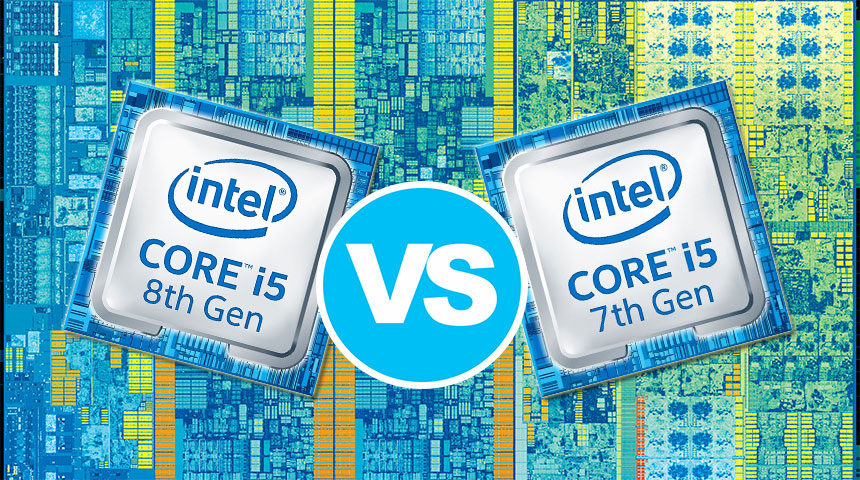 5 Desktop — Bitcoin Mining (mHash/s) about 90% more: 3.556 vs 1.872
5 Desktop — Bitcoin Mining (mHash/s) about 90% more: 3.556 vs 1.872 - Performance in CompuBench 1.5 Desktop — Video Composition (Frames/s) benchmark 2x (a) more: 1.395 vs 0.698
| Number of cores | 4 vs 2 |
| Number of threads | 4 vs 2 |
| Maximum frequency | 3.30 GHz vs 2.7 GHz |
| Level 1 cache | 64 KB (per core) vs 64 KB (per core) |
| Level 2 cache | 256 KB (per core) vs 256 KB (per core) |
| Level 3 cache | 6144 KB (shared) vs 3072 KB (shared) |
| PassMark — Single thread mark | 1482 vs 1226 |
| PassMark — CPU mark | 3183 vs 1274 |
| Geekbench 4 — Single Core | 599 vs 469 |
| Geekbench 4 — Multi-Core | 1790 vs 843 |
CompuBench 1. 5 Desktop — Face Detection (mPixels/s) 5 Desktop — Face Detection (mPixels/s) |
2.484 vs 1.017 |
| CompuBench 1.5 Desktop — Ocean Surface Simulation (Frames/s) | 60.606 vs 25.45 |
| CompuBench 1.5 Desktop — T-Rex (Frames/s) | 0.309 vs 0.136 |
| CompuBench 1.5 Desktop — Bitcoin Mining (mHash/s) | 3.556 vs 1.872 |
| CompuBench 1.5 Desktop — Video Composition (Frames/s) | 1.395 vs 0.698 |
Benchmark comparison
CPU 1: Intel Pentium G630
CPU 2: Intel Core i5-2400S
| PassMark — Single thread mark |
|
||||
| PassMark — CPU mark |
|
||||
| Geekbench 4 — Single Core |
|
||||
| Geekbench 4 — Multi-Core |
|
||||
CompuBench 1. 5 Desktop — Face Detection (mPixels/s) 5 Desktop — Face Detection (mPixels/s) |
|
||||
| CompuBench 1.5 Desktop — Ocean Surface Simulation (Frames/s) |
|
|
|||
| CompuBench 1.5 Desktop — T-Rex (Frames/s) |
|
||||
CompuBench 1. 5 Desktop — Bitcoin Mining (mHash/s) 5 Desktop — Bitcoin Mining (mHash/s) |
|
||||
| CompuBench 1.5 Desktop — Video Composition (Frames/s) |
|
| Name | Intel Pentium G630 | Intel Core i5-2400S |
|---|---|---|
| PassMark — Single thread mark | 1226 | 1482 |
| PassMark — CPU mark | 1274 | 3183 |
| Geekbench 4 — Single Core | 469 | 599 |
| Geekbench 4 — Multi-Core | 843 | 1790 |
CompuBench 1. 5 Desktop — Face Detection (mPixels/s) 5 Desktop — Face Detection (mPixels/s) |
1.017 | 2.484 |
| CompuBench 1.5 Desktop — Ocean Surface Simulation (Frames/s) | 25.45 | 60.606 |
| CompuBench 1.5 Desktop — T-Rex (Frames/s) | 0.136 | 0.309 |
| CompuBench 1.5 Desktop — Bitcoin Mining (mHash/s) | 1.872 | 3.556 |
| CompuBench 1.5 Desktop — Video Composition (Frames/s) | 0.698 | 1.395 |
Performance comparison
| Intel Pentium G630 | Intel Core i5-2400S | |
|---|---|---|
| Architecture name | Sandy Bridge | Sandy Bridge |
| Production date | September 2011 | January 2011 |
| Price at first issue date | $100 | $141 |
| Place in the ranking | 2415 | 2021 |
| Price now | $24. 99 99 |
$65.70 |
| Processor Number | G630 | i5-2400S |
| Series | Legacy Intel® Pentium® Processor | Legacy Intel® Core™ Processors |
| Status | Discontinued | Discontinued |
| Price/performance ratio (0-100) | 27.96 | 22.24 |
| Applicability | Desktop | Desktop |
| Support 64 bit | ||
| Base frequency | 2. 70 GHz 70 GHz |
2.50 GHz |
| Bus Speed | 5 GT/s DMI | 5 GT/s DMI |
| Crystal area | 131 mm | 216 mm |
| Level 1 cache | 64 KB (per core) | 64 KB (per core) |
| Level 2 cache | 256 KB (per core) | 256 KB (per core) |
| Level 3 cache | 3072 KB (shared) | 6144 KB (shared) |
| Process | 32 nm | 32 nm |
| Maximum core temperature | 69.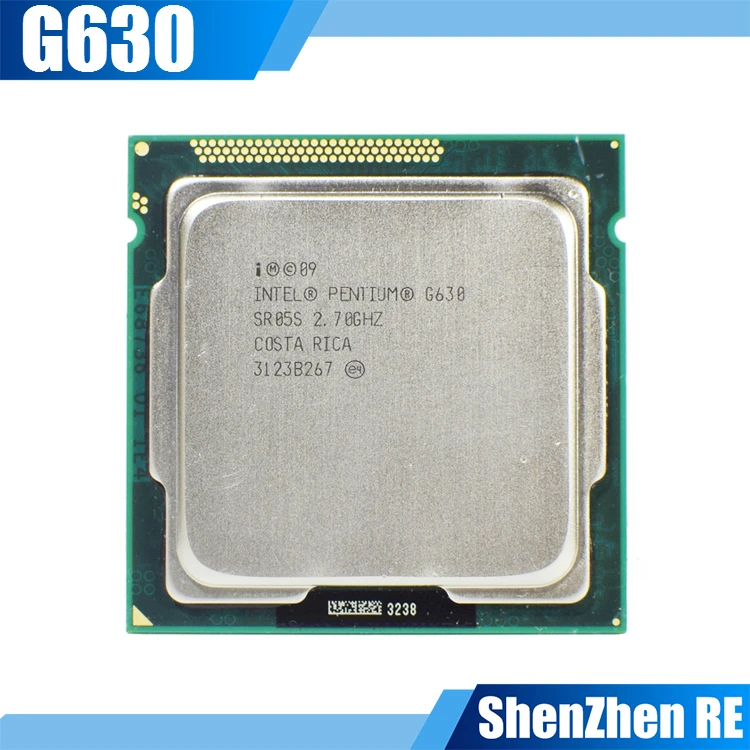 1°C 1°C |
69.1°C |
| Maximum frequency | 2.7 GHz | 3.30 GHz |
| Number of cores | 2 | 4 |
| Number of threads | 2 | 4 |
| Number of transistors | 504 million | 1160 million |
| Maximum number of memory channels | 2 | 2 |
| Maximum memory bandwidth | 17 GB/s | 21 GB/s |
| Maximum memory size | 32GB | 32GB |
| Supported memory types | DDR3 1066 | DDR3 1066/1333 |
| Graphics base frequency | 850MHz | 850MHz |
| Graphics max dynamic frequency | 1.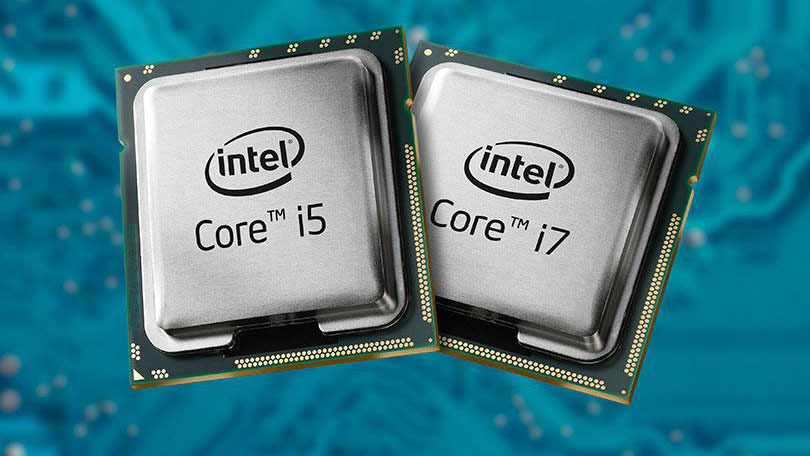 10 GHz 10 GHz |
1.10 GHz |
| Maximum GPU clock | 1.1 GHz | 1.1 GHz |
| Intel® Clear Video HD Technology | ||
| Intel® Flexible Display Interface (Intel® FDI) | ||
| Intel® InTru™ 3D Technology | ||
| Intel® Quick Sync Video | ||
| Integrated graphics | Intel HD Graphics | Intel® HD Graphics 2000 |
| Device ID | 0x102 | |
| Maximum number of monitors supported | 2 | 2 |
| WiDi support | ||
| Low Halogen Options Available | ||
| Maximum number of processors in configuration | 1 | 1 |
| Package Size | 37. 5mm x 37.5mm 5mm x 37.5mm |
37.5mm x 37.5mm |
| Supported sockets | FCLGA1155 | LGA1155 |
| Power consumption (TDP) | 65 Watt | 65 Watt |
| PCI Express revision | 2.0 | 2.0 |
| Number of PCI Express lanes | 16 | |
| Execute Disable Bit (EDB) | ||
| Intel® Trusted Execution Technology (TXT) | ||
| Intel® Identity Protection Technology | ||
| Enhanced Intel SpeedStep® Technology | ||
| Flexible Display interface (FDI) | ||
| Idle States | ||
| Extended instructions | Intel® SSE4.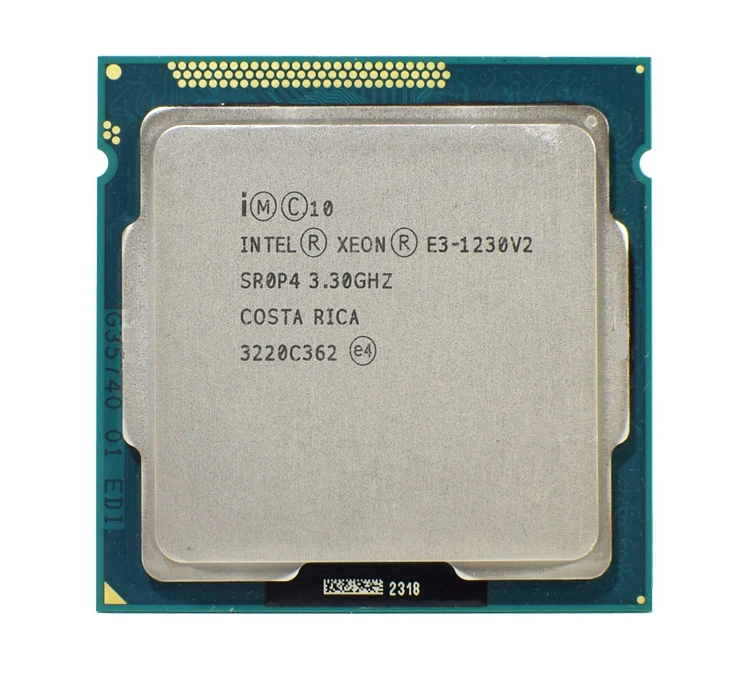 1, Intel® SSE4.2 1, Intel® SSE4.2 |
Intel® SSE4.1, Intel® SSE4.2, Intel® AVX |
| Intel 64 | ||
| Intel® Advanced Vector Extensions (AVX) | ||
| Intel® AES New Instructions | ||
| Intel® Fast Memory Access | ||
| Intel® Flex Memory Access | ||
| Intel® Hyper-Threading Technology | ||
| Intel® Optane™ Memory Supported | ||
| Intel® Turbo Boost Technology | ||
| Intel® vPro™ Platform Eligibility | ||
| Thermal Monitoring | ||
| Intel® Virtualization Technology (VT-x) | ||
| Intel® Virtualization Technology for Directed I/O (VT-d) | ||
| Intel® VT-x with Extended Page Tables (EPT) |
Compare Intel Pentium G630 and Intel Core i5 5675C
Reasons to choose an Intel Pentium G630
- Higher integrated video processor frequency: 850 MHz vs.

